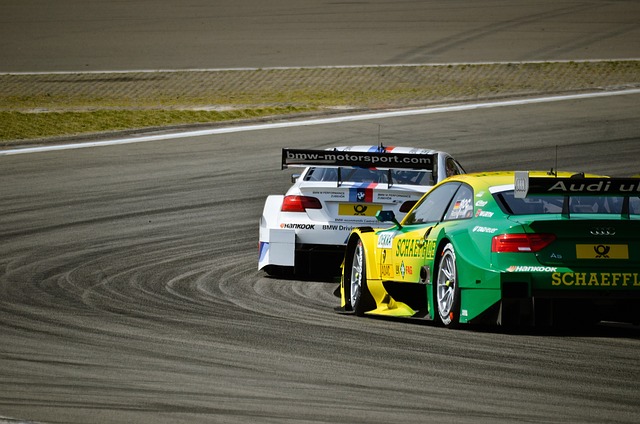The Need for Green in the Fast Lane
Europe’s love affair with Formula 1 is no secret, but as the world focuses on environmental sustainability, motorsports isn’t exempt from the conversation. While it may seem like speed and sustainability are at opposite ends of the spectrum, there’s a budding commitment within Formula 1 to merge these two. The burning question remains – how is one of the most fuel-intensive sports working towards becoming environmentally friendly?
Historical Carbon Footprint of Formula 1
It’s undeniable; Formula 1 has a carbon-heavy history. The sport has always been synonymous with roaring engines and high-octane fuels. In the past, fuel efficiency was an afterthought, overshadowed by the relentless pursuit of speed. Teams would frequently consume hundreds of litres during race weekends, leading to substantial CO2 emissions. This doesn’t even factor in the transportation of teams, equipment, and fans globally, which only added to the sport’s environmental toll.
Modern Initiatives – Turning the Tides
Things have been changing in recent years. The introduction of hybrid engines in 2014 was a monumental step. These power units combine traditional internal combustion engines with electrical energy recovery systems, reducing fuel use by up to 35%. This move hasn’t just been good for the planet; it’s also added a new strategic dimension to the races, proving that green can coexist with the sport’s competitive spirit.
The Role of Regulations and Governance
Pushing for Carbon Neutrality
The FIA (Fédération Internationale de l’Automobile), the governing body of Formula 1, has taken the lead in pushing for environmental reforms. Their most ambitious goal yet? Achieving carbon neutrality by 2030. This includes not just the races, but also the extensive logistics involved. Measures include optimising travel, reducing waste at race events, and even ensuring offices and factories used by teams are more sustainable.
The Evolution of F1 Fuel
Believe it or not, the fuel used in Formula 1 cars has seen substantial green improvements. The current regulations mandate that the fuel must contain at least 10% bio-components. There’s an ongoing push to increase this percentage, with several teams already testing advanced biofuels. These eco-friendly fuels reduce emissions without compromising the power output, illustrating that green racing doesn’t mean slowing down.
Challenges and Roadblocks Ahead
Consumer Perceptions and Expectations
As much as Formula 1 is about the thrill of racing, it’s also about the spectacle for fans. The sound of a Formula 1 engine is iconic. As the sport transitions to more sustainable practices, it faces the challenge of maintaining its essence and appeal. There’s a balance to strike – how to innovate without alienating the traditional fan base, all while attracting a new audience passionate about sustainability.
The Economic Implications
Transitioning to greener technologies isn’t just a logistical challenge; it’s an economic one. R&D costs money, and not all teams have the same financial resources. Ensuring that the drive towards sustainability doesn’t create an unfair competitive landscape is crucial. Smaller teams mustn’t be left behind in the green race.
Looking to the Future
Technological Innovations on the Horizon
Formula 1 has always been at the cutting edge of automotive technology, and this holds true for green innovations. From exploring hydrogen as a potential fuel source to advancements in aerodynamics that reduce fuel consumption, the future looks bright. The sport is not just adapting; it’s pioneering solutions that could find applications in everyday vehicles.
The Eco-friendly Facts to Know
- Hybrid engines introduced in 2014 reduced fuel usage by up to 35%.
- Current F1 fuels must contain a minimum of 10% bio-components.
- FIA aims for carbon neutrality in Formula 1 by 2030.
- Technological advances in the sport could benefit the broader automotive industry.
The Wider Impact on Motorsports
Influencing Other Racing Disciplines
The strides made by Formula 1 often set the tone for other motorsports. As F1 pioneers green initiatives, we’re seeing a trickle-down effect. Series like Formula E have already embraced electric technology, while MotoGP and DTM are evaluating their environmental strategies, inspired by F1’s commitment.
Partnerships and Collaborations
The journey towards sustainability is not one Formula 1 is taking alone. Collaboration is the name of the game. Partnerships with environmental organizations, research institutions, and tech companies are amplifying the impact of F1’s green initiatives. These collaborations bring fresh perspectives, resources, and expertise, accelerating the sport’s eco-friendly transformation.
The Role of Fans and the Community
Fan Engagement and Education
Fans are the lifeblood of Formula 1, and their role in the sport’s sustainable evolution is paramount. Educating fans about the importance of green initiatives not only garners support but can also inspire eco-conscious changes in their own lives. Events, interactive exhibits, and digital campaigns have played pivotal roles in this awareness drive.
Green Initiatives Beyond the Track
It’s not just about the cars and the races. Formula 1 events are becoming greener in every aspect. From recyclable merchandise to sustainable food vendors, the entire F1 experience is undergoing an eco-transformation. Initiatives like tree planting campaigns, where a tree is planted for every ticket sold, exemplify this broader commitment to the planet.
The Green Flag Waves Ahead
F1, at its heart, is about innovation, strategy, and adaptability. The same qualities that have made it a beloved sport for decades are now driving its transition to a greener future. While challenges remain, the commitment from teams, governing bodies, and fans alike suggests a promising road ahead. The race towards a sustainable Formula 1 is on, and it’s one we should all be excited about.




